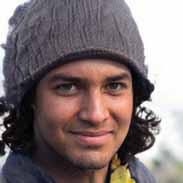A;P Chapter 4 Practice Test – Flashcards
Unlock all answers in this set
Unlock answersquestion
C) osseous tissue
answer
1) Each of the following is a primary tissue type, except A) muscle tissue. B) neural tissue. C) osseous tissue. D) connective tissue. E) epithelial tissue.
question
E) storing energy reserves
answer
4) Functions of epithelia include all of the following, except A) providing physical protection. B) controlling permeability. C) absorption. D) producing specialized secretions. E) storing energy reserves.
question
E) All of the above are correct.
answer
10) The basic shapes of epithelial cells include all of the following, except A) stratified. B) squamous. C) cuboidal. D) columnar. E) All of the above are correct.
question
A) lining the urinary bladder
answer
17) A transitional epithelium would be found A) lining the urinary bladder. B) lining the ducts that drain sweat glands. C) lining kidney tubules. D) lining the stomach. E) at the surface of the skin.
question
C) pseudostratified columnar
answer
14) The type of epithelium found where absorption or secretion takes place is ________ epithelium. A) simple squamous B) simple cuboidal C) pseudostratified columnar D) All of the above are correct. E) both A and B
question
C) a basal lamina.
answer
9) Epithelium is connected to underlying connective tissue by A) a basement membrane. B) interfacial canals. C) a basal lamina. D) a reticular lamina. E) proteoglycan.
question
A) tight junction
answer
7) A type of intercellular connection in which there is a partial fusion of the lipid portions of the two cell membranes is termed a A) tight junction. B) gap junction. C) intermediate junction. D) desmosome. E) none of the above
question
C) microvilli
answer
6) Epithelial cells that are adapted for absorption or secretion usually have ________ at their free surface. A) many mitochondria B) cilia C) microvilli D) junctional complexes E) Golgi complexes
question
D) forming the follicles of the thyroid gland.
answer
15) Simple cuboidal epithelium would be found A) at the surface of the skin. B) lining the trachea. C) lining blood vessels. D) forming the follicles of the thyroid gland. E) lining the air sacs of the lungs.
question
A) trachea
answer
19) You would find pseudostratified columnar epithelium lining the A) trachea. B) urinary bladder. C) secretory portions of the pancreas. D) surface of the skin. E) stomach.
question
A) endocrine glands.
answer
20) Glands which secrete hormones into the blood or tissue fluids are A) endocrine glands. B) mixed glands. C) exocrine glands. D) merocrine glands. E) holocrine glands.
question
C) apocrine
answer
21) Which of the following is a type of secretion in which some cytoplasm is lost with the product? A) holocrine B) merocrine C) apocrine D) mucus E) serous
question
D) all of the above
answer
22) Functions of connective tissue include A) establishing a structural framework for the body. B) storing energy reserves. C) providing protection for delicate organs. D) all of the above E) A and C only
question
A) fibroblasts.
answer
23) The fibrous components of connective tissue are produced by A) fibroblasts. B) macrophages. C) adipocytes. D) mast cells. E) melanocytes.
question
C) adipocytes.
answer
24) Cells that store fat are called A) fibroblasts. B) fixed macrophages. C) adipocytes. D) mast cells. E) melanocytes.
question
C) anchoring blood vessels and nerves
answer
25) Loose connective tissue functions in all of the following ways, except: A) transporting substances between cells. B) supporting epithelia. C) anchoring blood vessels and nerves. D) storing lipids. E) filling spaces between organs.
question
D) bone
answer
32) Chondrocytes are to cartilage as osteocytes are to A) blood. B) epithelium. C) fat. D) bone. E) neural tissue.
question
A) perichondrium
answer
33) Cartilage is separated from surrounding tissues by a fibrous A) perichondrium. B) lacunae. C) periosteum. D) canaliculi. E) Volkmann's canal.
question
A) mucous
answer
36) Which of the following membranes line cavities that communicate with the exterior of the body? A) mucous B) serous C) cutaneous D) synovial E) pleural
question
B) cartilage
answer
31) The proteoglycan, chondroitin sulfate would be found in the matrix of A) bone. B) cartilage. C) areolar tissue. D) elastic connective tissue. E) tendons.
question
E) muscle
answer
40) Tissue that is specialized for contraction is ________ tissue. A) loose connective B) dense connective C) epithelial D) nerve E) muscle
question
B) neural
answer
43) Tissue that is specialized for the conduction of electrical impulses is ________ tissue. A) connective B) neural C) areolar D) osseous E) epithelial



